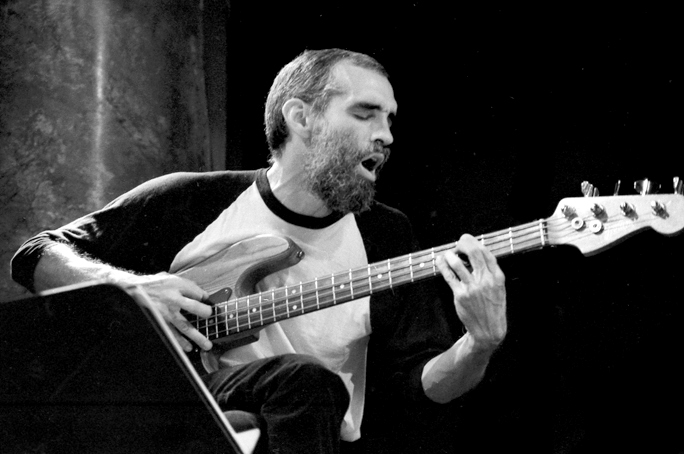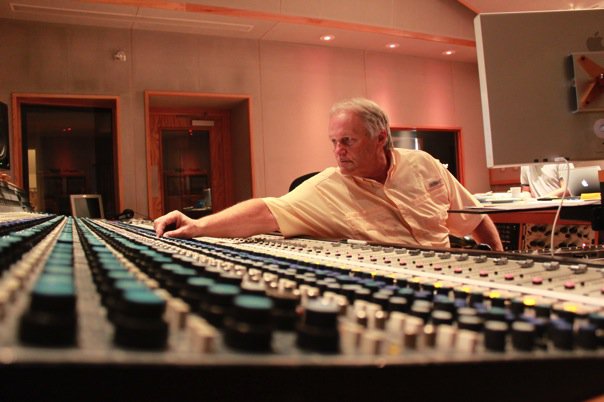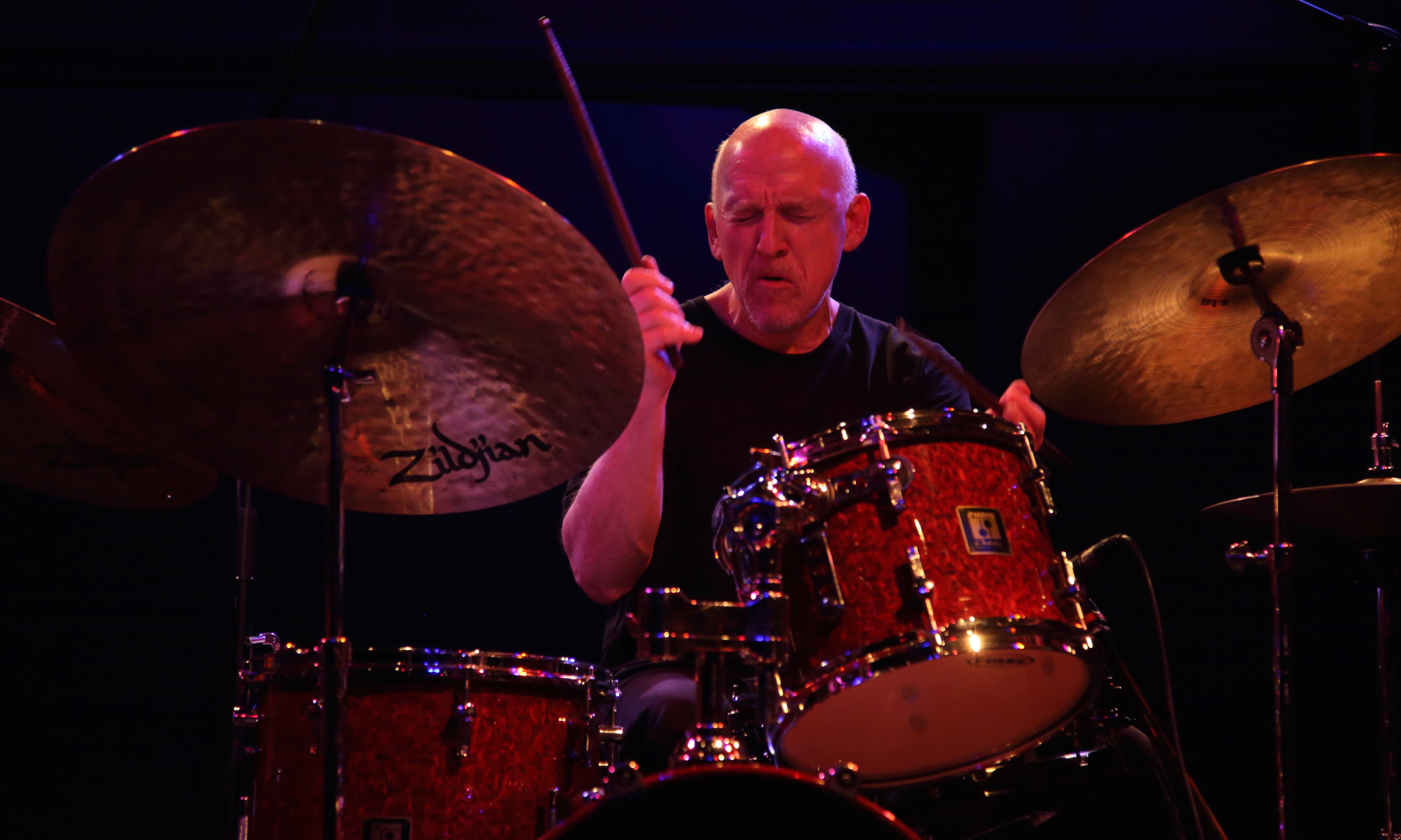|
Always Pack Your Uniform On Top
''Always Pack Your Uniform on Top'' is a live album by bassist Steve Swallow recorded at Ronnie Scott's Jazz Club in December 1999 and released on the Xtra Watt label in 2000. Reception Allmusic awarded the album 3 stars and the review by David R. Adler states: "This is Swallow's third standards-derived quintet album, following in the footsteps of 1994's ''Real Book'' and 1996's '' Deconstructed''... Although there's a brand new batch of tunes, Swallow applies the same approach, using familiar progressions as the basis for clever original music". In JazzTimes Bill Bennett wrote: "His gifts as a composer is equally evident in this set... Throughout, the ensemble work is outstanding, with Goodrick and Nussbaum in constant touch". On All About Jazz Glen Astarita noted: "''Always Pack Your Uniform On Top'' is a class act - as the band most assuredly brought down the house at this time-honored jazz venue".Astarita, GAll About Jazz ReviewAugust 1, 2000 Track listing All compositions by ... [...More Info...] [...Related Items...] OR: [Wikipedia] [Google] [Baidu] |
Steve Swallow
Steve Swallow (born October 4, 1940) is an American jazz bassist and composer, known for his collaborations with Jimmy Giuffre, Gary Burton, and Carla Bley. He was one of the first jazz double bassists to switch entirely to electric bass guitar. Biography Born in Fair Lawn, New Jersey, United States, Swallow studied piano and trumpet, as a child, before turning to the double bass at age 14. While attending a prep school, he began trying his hand in jazz improvisation. In 1960, he left Yale University, where he was studying composition, and settled in New York City, playing at the time in Jimmy Giuffre's trio along with Paul Bley. After joining Art Farmer's quartet in 1963, Swallow began to write. It is in the 1960s that his long-term association with Gary Burton's various bands began. In the early 1970s, Swallow switched exclusively to electric bass guitar, of which he prefers the five-string variety. Along with Monk Montgomery and Bob Cranshaw, Swallow was among the firs ... [...More Info...] [...Related Items...] OR: [Wikipedia] [Google] [Baidu] |
All About Jazz
''All About Jazz'' is a website established by Michael Ricci in 1995. A volunteer staff publishes news, album reviews, articles, videos, and listings of concerts and other events having to do with jazz. Ricci maintains a related site, ''Jazz Near You'', about local concerts and events. The Jazz Journalists Association voted ''All About Jazz'' Best Website Covering Jazz for thirteen consecutive years between 2003 and 2015, when the category was retired. In 2015, Ricci said the site received a peak of 1.3 million readers per month in 2007. Another source said that the site has over 500,000 readers around the world. Ricci was born in Philadelphia. He heard classical and jazz Jazz is a music genre that originated in the African-American communities of New Orleans, Louisiana in the late 19th and early 20th centuries, with its roots in blues and ragtime. Since the 1920s Jazz Age, it has been recognized as a majo ... from his father's music collection. He played trumpet and ... [...More Info...] [...Related Items...] OR: [Wikipedia] [Google] [Baidu] |
Audio Engineer
An audio engineer (also known as a sound engineer or recording engineer) helps to produce a recording or a live performance, balancing and adjusting sound sources using equalization, dynamics processing and audio effects, mixing, reproduction, and reinforcement of sound. Audio engineers work on the "technical aspect of recording—the placing of microphones, pre-amp knobs, the setting of levels. The physical recording of any project is done by an engineer... the nuts and bolts." Sound engineering is increasingly seen as a creative profession where musical instruments and technology are used to produce sound for film, radio, television, music and video games. Audio engineers also set up, sound check and do live sound mixing using a mixing console and a sound reinforcement system for music concerts, theatre, sports games and corporate events. Alternatively, ''audio engineer'' can refer to a scientist or professional engineer who holds an engineering degree and who de ... [...More Info...] [...Related Items...] OR: [Wikipedia] [Google] [Baidu] |
Drum Kit
A drum kit (also called a drum set, trap set, or simply drums) is a collection of drums, cymbals, and other auxiliary percussion instruments set up to be played by one person. The player (drummer) typically holds a pair of matching drumsticks, one in each hand, and uses their feet to operate a foot-controlled hi-hat and bass drum pedal. A standard kit may contain: * A snare drum, mounted on a stand * A bass drum, played with a beater moved by a foot-operated pedal * One or more tom-toms, including rack toms and/or floor toms * One or more cymbals, including a ride cymbal and crash cymbal * Hi-hat cymbals, a pair of cymbals that can be manipulated by a foot-operated pedal The drum kit is a part of the standard rhythm section and is used in many types of popular and traditional music styles, ranging from rock and pop to blues and jazz. __TOC__ History Early development Before the development of the drum set, drums and cymbals used in military and orchestral mu ... [...More Info...] [...Related Items...] OR: [Wikipedia] [Google] [Baidu] |
Adam Nussbaum
Adam Nussbaum (born November 29, 1955) is an American jazz drummer. Early life Nussbaum was born in New York City on November 29, 1955. He grew up in Norwalk, Connecticut, and first played the drums at the age of four. After five years of piano study, he got his first drum set when he was around twelve. He later studied music at the City College of New York, during which time he also played in local clubs. Later life and career In 1978 he joined Dave Liebman's quintet and did his first European tour with John Scofield.Kenny, Jack"Local Drummer Nussbaum Heads to Europe; Now Firmly Established in Jazz Firmament ''The Norwalk Hour''. September 19, 1979. Retrieved 2013-03-31. Nussbaum played with saxophonist Stan Getz in 1982–83. In 1983 he also became a member of the Gil Evans Orchestra, and toured Europe and Japan with it two years later. He later joined the Eliane Elias/Randy Brecker Quartet, Gary Burton, and Toots Thielemans. In 1987 he began touring with Michael Brecker's ... [...More Info...] [...Related Items...] OR: [Wikipedia] [Google] [Baidu] |
Guitar
The guitar is a fretted musical instrument that typically has six strings. It is usually held flat against the player's body and played by strumming or plucking the strings with the dominant hand, while simultaneously pressing selected strings against frets with the fingers of the opposite hand. A plectrum or individual finger picks may also be used to strike the strings. The sound of the guitar is projected either acoustically, by means of a resonant chamber on the instrument, or amplified by an electronic pickup and an amplifier. The guitar is classified as a chordophone – meaning the sound is produced by a vibrating string stretched between two fixed points. Historically, a guitar was constructed from wood with its strings made of catgut. Steel guitar strings were introduced near the end of the nineteenth century in the United States; nylon strings came in the 1940s. The guitar's ancestors include the gittern, the vihuela, the four-course Renaissance guitar, an ... [...More Info...] [...Related Items...] OR: [Wikipedia] [Google] [Baidu] |
Mick Goodrick
Mick Goodrick (June 9, 1945 – November 16, 2022) was an American jazz guitarist who spent most of his career as a teacher. In the early 1970s, he worked with Gary Burton and Pat Metheny. Biography An Elvis fan, Goodrick began studying guitar in his pre-teens and was performing professionally a few years later. When he was sixteen, he became interested in jazz at a Stan Kenton Band Camp. He attended the Berklee School of Music from 1963–1967. He taught at Berklee, then spent a few years touring with Gary Burton. After returning to Boston, he settled into a career largely as an educator. Goodrick has had many notable students, including Bill Frisell, Julian Lage, John Scofield, Lage Lund, Mike Stern, Avner Strauss, and Rale Micic. His first book, ''The Advancing Guitarist,'' is an instruction manual for guitarists of all styles. He has also written a series of books addressing the intricacies of harmonic voice leading. Goodrick worked with Charlie Haden's Liberation Music ... [...More Info...] [...Related Items...] OR: [Wikipedia] [Google] [Baidu] |
Tenor Saxophone
The tenor saxophone is a medium-sized member of the saxophone family, a group of instruments invented by Adolphe Sax in the 1840s. The tenor and the alto are the two most commonly used saxophones. The tenor is pitched in the key of B (while the alto is pitched in the key of E), and written as a transposing instrument in the treble clef, sounding an octave and a major second lower than the written pitch. Modern tenor saxophones which have a high F key have a range from A2 to E5 (concert) and are therefore pitched one octave below the soprano saxophone. People who play the tenor saxophone are known as "tenor saxophonists", "tenor sax players", or "saxophonists". The tenor saxophone uses a larger mouthpiece, reed and ligature than the alto and soprano saxophones. Visually, it is easily distinguished by the curve in its neck, or its crook, near the mouthpiece. The alto saxophone lacks this and its neck goes straight to the mouthpiece. The tenor saxophone is most recognize ... [...More Info...] [...Related Items...] OR: [Wikipedia] [Google] [Baidu] |
Chris Potter (jazz Saxophonist)
Chris Potter (born January 1, 1971) is an American jazz saxophonist, composer, and multi-instrumentalist. Potter first came to prominence as a sideman with trumpeter Red Rodney (1992–1993), before extended stints with drummer Paul Motian (1994–2009), bassist Dave Holland (1999–2007), trumpeter Dave Douglas (1998–2003) and session work, while also maintaining an active solo career.Huey, SteveChris Potter Biography accessed 10 November 2015 Biography Chris Potter was born in Chicago, Illinois, but his family moved to Columbia, South Carolina, where he spent his formative years. Potter showed an early interest in a wide variety of different music and learned several instruments, including the guitar and piano. He realized after hearing Paul Desmond that the saxophone would be the vehicle that would best allow him to express himself musically. He has been quoted by Jazz Times as saying that, "'Music has always been a vehicle for me to investigate the things that are import ... [...More Info...] [...Related Items...] OR: [Wikipedia] [Google] [Baidu] |
Trumpet
The trumpet is a brass instrument commonly used in classical and jazz ensembles. The trumpet group ranges from the piccolo trumpet—with the highest register in the brass family—to the bass trumpet, pitched one octave below the standard B or C trumpet. Trumpet-like instruments have historically been used as signaling devices in battle or hunting, with examples dating back to at least 1500 BC. They began to be used as musical instruments only in the late 14th or early 15th century. Trumpets are used in art music styles, for instance in orchestras, concert bands, and jazz ensembles, as well as in popular music. They are played by blowing air through nearly-closed lips (called the player's embouchure), producing a "buzzing" sound that starts a standing wave vibration in the air column inside the instrument. Since the late 15th century, trumpets have primarily been constructed of brass tubing, usually bent twice into a rounded rectangular shape. There are many di ... [...More Info...] [...Related Items...] OR: [Wikipedia] [Google] [Baidu] |
Bass Guitar
The bass guitar, electric bass or simply bass (), is the lowest-pitched member of the string family. It is a plucked string instrument similar in appearance and construction to an electric or an acoustic guitar, but with a longer neck and scale length, and typically four to six strings or courses. Since the mid-1950s, the bass guitar has largely replaced the double bass in popular music. The four-string bass is usually tuned the same as the double bass, which corresponds to pitches one octave lower than the four lowest-pitched strings of a guitar (typically E, A, D, and G). It is played primarily with the fingers or thumb, or with a pick. To be heard at normal performance volumes, electric basses require external amplification. Terminology According to the ''New Grove Dictionary of Music and Musicians'', an "Electric bass guitar sa Guitar, usually with four heavy strings tuned E1'–A1'–D2–G2." It also defines ''bass'' as "Bass (iv). A contraction of Double bass ... [...More Info...] [...Related Items...] OR: [Wikipedia] [Google] [Baidu] |
JazzTimes
''JazzTimes'' is an American magazine devoted to jazz. Published 10 times a year, it was founded in Washington, D.C. in 1970 by Ira Sabin as the newsletter ''Radio Free Jazz'' to complement his record store. Coverage After a decade of growth in subscriptions, deepening of writer pools, and internationalization, ''Radio Free Jazz'' expanded its focus and, at the suggestion of jazz critic Leonard Feather, changed its name to ''JazzTimes'' in 1980. Sabin's Glenn joined the magazine staff in 1984. In 1990, ''JazzTimes'' incorporated exclusive cover photography and higher quality art and graphic design. The magazine reviews audio and video releases concerts, instruments, music supplies, and books. It also includes a guide to musicians, events, record labels, and music schools. David Fricke, whose writing credits include '' Rolling Stone'', ''Melody Maker'' and '' Mojo'', also contributes to the magazine. Web traffic JazzTimes.com was redesigned in 2019. Among its most popu ... [...More Info...] [...Related Items...] OR: [Wikipedia] [Google] [Baidu] |





